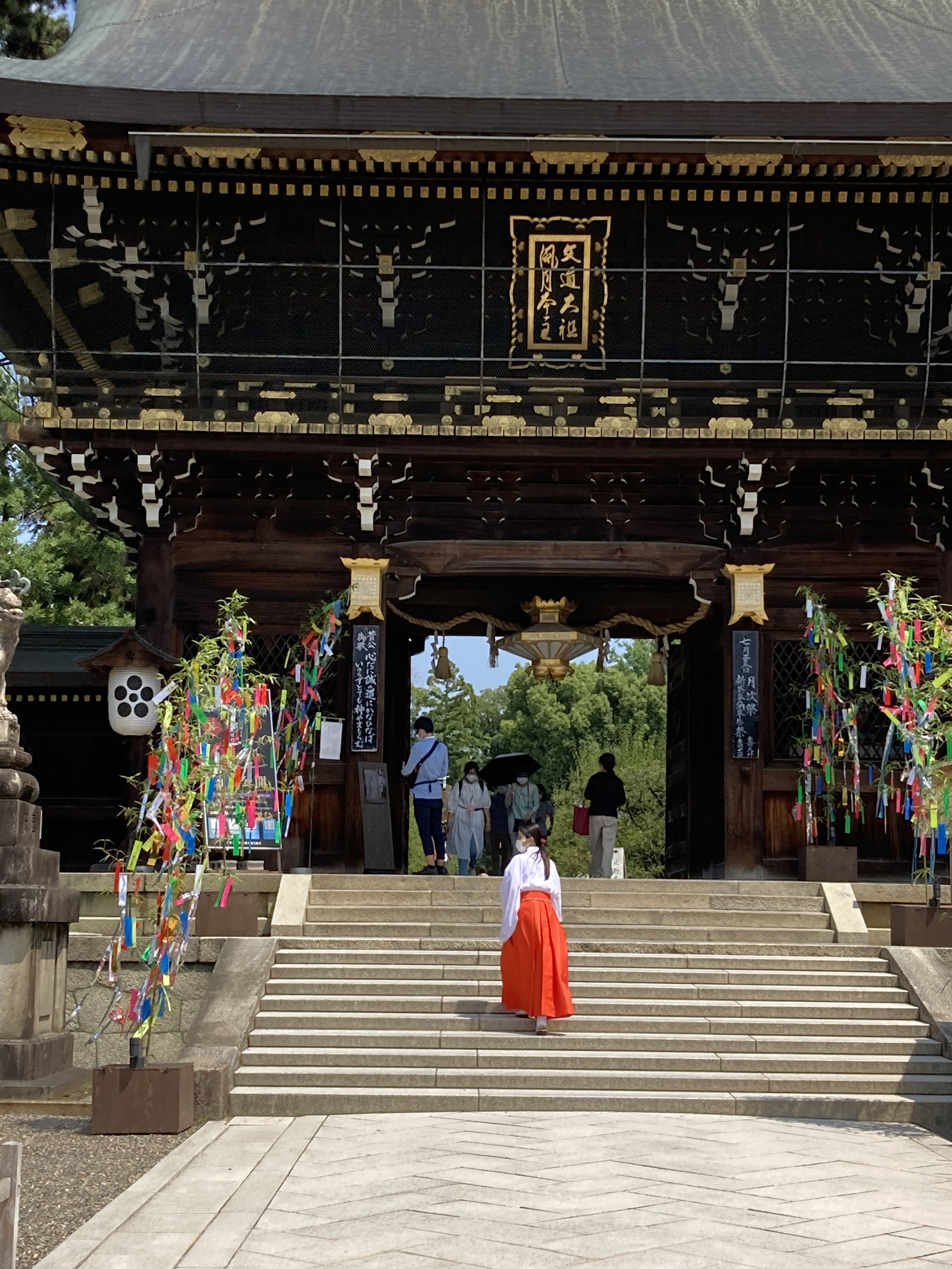TANABATA-STAR FESTIVAL
TANABATA meaning “evening of the seventh” and also known as the “Star Festival” was introduced to Japan by Empress Koken in 755. It joyfully celebrates the meeting of the two deities Orihime and Hikoboshi (represented by the stars Vega and Altair respectively). According to legend, the Milky Way separates these two lovers, and they are allowed to meet only once a year on the seventh day of the lunar month. The Orihime and Hikoboshi story varies, but the most popular version is called “The Cowherd and the Weaver Girl” and is as follows:
Orihime the “Weaving Princess”, daughter of Tentei, the”King of the Sky”, or the universe itself, wove beautiful fabrics by the bank of the Amano-gawa, literally “heavenly river”, or Milky Way. Her father loved the cloth that she wove so she worked very hard every day to weave it. However, Orihime was sad because of her hard work she could never meet and fall in love with anyone. Concerned about his daughter, Tentei arranged for her to meet Hikoboshi, “Cowherd Star”, who lived and worked on the other side of Amano-gawa. When the two met, they fell instantly in love with each other and married shortly thereafter. However once married, Orihime would no longer weave cloth for Tentei, and Hikoboshi allowed his cows to stray all over Heaven. In anger, Tentei separated the two lovers from each other on the Amano-gawa (Milky Way) and forbade them to meet. Orihime became despondent at the loss of her husband and asked her father to let them meet again. Tentei was moved by his daughter’s tears and allowed them to meet on the 7th day of the 7th month due to to her dedication weaving. It is said though, that if it rains on Tanabata, the lovers will have to wait yet another year to meet, and the rain-drops of this day are then called “the tears of Orihime and Hikoboshi”.
In present-day Japan, the custom for Japanese children, and Japanese “children at heart” is celebrated by writing wishes, sometimes in the form of poetry, on small strips of colored paper with other decorations, then tied to bamboo making a “wish tree”. The bamboo wish tree is often set a float on a river or burned after the festival around midnight. This resembles the custom of floating paper ships and candles on rivers during Obon.

